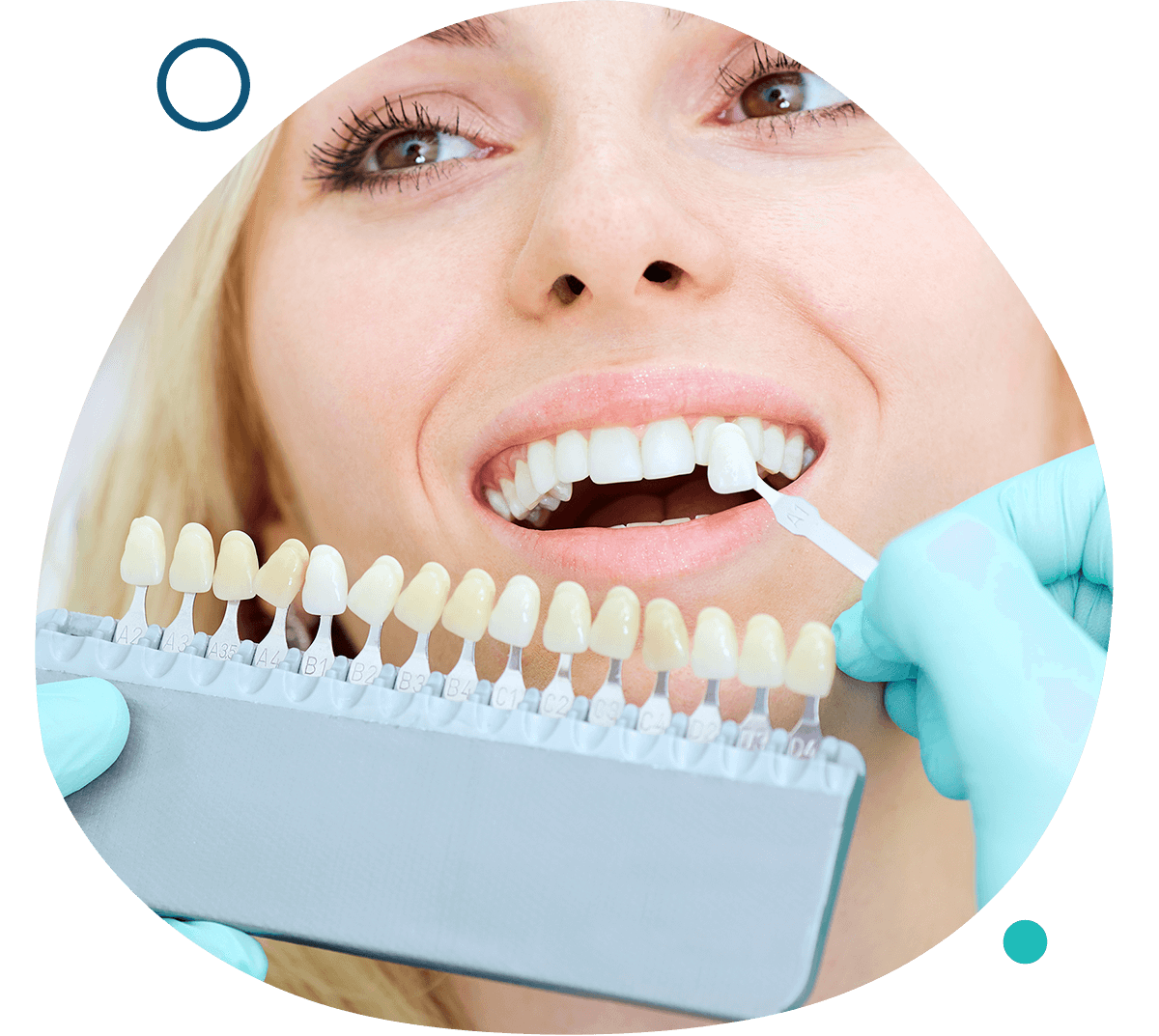

The American Academy of Pediatric Dentistry (AAPD) recommends that children first see a dentist as early as six months of age and no later than one year of age. During this time, your child’s baby teeth will be coming in and your dentist can examine the health of your child’s first few teeth. After the first visit, be sure to schedule regular checkups every six months.
Visiting the dentist regularly will not only help keep your teeth and mouth healthy, but will also help keep the rest of your body healthy. Dental care is important because it:
Your teeth may feel fine, but it’s still important to see the dentist regularly because problems can exist without you knowing. Your smile’s appearance is important, and your dentist can help keep your smile healthy and looking beautiful. With so many advances in dentistry, you no longer have to settle for stained, chipped, missing, or misshapen teeth. Today’s dentists offer many treatment choices that can help you smile with confidence, including:
Choosing a dentist who “clicks” with you and your family is important, and you may wish to consider several dentists before making your final decision. During your first visit, you should be able to determine whether the dentist is right for you. During your appointment, consider the following:

A smile makeover is a cosmetic dental procedure that focuses on improving the appearance of a person’s smile. It involves a thorough evaluation of the patient’s dental needs to create a personalized treatment plan that can address cosmetic issues such as teeth discoloration, misalignments, gaps, and chips. The treatment options may include teeth whitening, dental veneers, dental bonding, and other cosmetic dental procedures.
Like any dental procedure, a smile makeover can have potential side effects. Some common side effects of smile makeovers include sensitivity, discomfort, and swelling. These side effects are usually mild and temporary and can be managed with over-the-counter pain relievers and following the aftercare instructions provided by the dentist.
In rare cases, more serious side effects such as infection or nerve damage may occur, but these are rare and can be minimized by choosing a qualified and experienced dental professional.
As with any dental procedure, there are potential risks and complications associated with a smile makeover. Some of the risks may include:
Sensitivity: Teeth may become sensitive to hot and cold temperatures.
Discomfort: Patients may experience discomfort or pain following the procedure.
Swelling: Some patients may experience swelling in the treated area.
Infection: There is a small risk of infection, especially if proper oral hygiene is not maintained.
Nerve damage: In rare cases, nerve damage can occur during the procedure.
Unsatisfactory results: There is always a possibility that the results of the procedure may not meet the patient’s expectations.
It’s essential to consult with a qualified dental professional to discuss the potential risks and complications associated with any cosmetic dental procedure and to ensure that the chosen procedures are appropriate for the individual’s needs and goals.
Dental bridges are prosthetic devices used to replace one or more missing teeth by bridging the gap between two natural teeth or dental implants. A bridge is made up of two or more dental crowns for the teeth on either side of the gap (abutment teeth) and a false tooth (pontic) in between.
The crowns are placed over the abutment teeth and the pontic fills the gap, restoring the function and appearance of the missing teeth. Bridges can be made of various materials, including porcelain, ceramic, metal, or a combination of these materials. They are typically cemented permanently in place by a dentist or prosthodontist.
Bite problems: A poorly fitting dental bridge can cause bite problems, including discomfort, pain, and difficulty eating.
Damage to supporting teeth: The preparation of the natural teeth to support a dental bridge can lead to damage or weakening of the teeth over time.
Aesthetic issues: Depending on the location of the missing tooth, a dental bridge may not look as natural as other tooth replacement options.
Bone loss: Dental bridges do not stimulate bone growth in the jawbone, which can lead to bone loss over time.
If you experience any of these dental bridge problems, it’s important to contact your dentist right away to schedule an appointment for an evaluation and possible repair or replacement of the bridge.
Veneers are thin, custom-made shells that are placed on the front surface of teeth to improve their appearance. Veneers are made from either porcelain or composite resin, and can be used to correct a variety of cosmetic issues, including chipped, cracked, or stained teeth, as well as gaps between teeth or misshapen teeth.
The veneer procedure typically involves removing a small amount of the tooth’s surface to make room for the veneer, taking impressions of the tooth to create a customized veneer, and then bonding the veneer onto the tooth’s surface using a special dental adhesive.
Veneers are a popular cosmetic dentistry option because they are minimally invasive and can provide a dramatic improvement in the appearance of a patient’s smile.
Teeth whitening is a cosmetic dental procedure that involves using specialized treatments to remove stains and discoloration from the teeth, resulting in a brighter, whiter smile. There are several different teeth whitening methods available, including in-office treatments performed by a dental professional, at-home treatments using custom-fitted trays and whitening gel, and over-the-counter products such as whitening strips and toothpaste.
Teeth can become discolored or stained for a variety of reasons, including aging, smoking, certain foods and drinks, and poor oral hygiene. Teeth whitening can be an effective way to improve the appearance of your smile and boost your confidence. However, it’s important to discuss your options with a dental professional to determine which teeth whitening method is best suited for your individual needs and oral health status.
The cost of teeth whitening in Australia can vary depending on the type of treatment chosen, the location of the dental clinic, and the severity of the discoloration being addressed. On average, the cost of professional in-office teeth whitening in Australia can range from AUD $600 to $1,200 per treatment, while at-home treatments using custom-fitted trays and whitening gel can cost between AUD $300 to $800.
Over-the-counter products such as whitening toothpaste and strips can be less expensive, with prices ranging from AUD $10 to $100. It’s important to keep in mind that the cost of teeth whitening can vary depending on the individual needs of the patient, and that some dental clinics may offer financing options to help make the cost more manageable.
It’s also important to choose a qualified dental professional for teeth whitening treatments to ensure the best possible results.
The longevity of teeth whitening results can vary depending on several factors, including the type of treatment selected, the individual’s oral hygiene habits, and lifestyle factors such as diet and smoking. In general, professional teeth whitening treatments, whether performed in-office or with custom-fitted trays and whitening gel, can provide results that last between six months to two years. Over-the-counter products such as whitening toothpaste and strips typically provide more temporary results that may last for a few months.
It’s important to maintain good oral hygiene practices, such as brushing and flossing regularly and visiting the dentist for regular check-ups and cleanings, to help prolong the results of teeth whitening treatments. Additionally, avoiding foods and drinks that can stain the teeth, such as coffee, tea, and red wine, can help maintain the whiteness of your smile.
Teeth whitening is generally considered a safe and effective cosmetic dental treatment when performed by a qualified dental professional. However, like any dental or medical procedure, there are potential risks and side effects to be aware of. Some of the risks of teeth whitening can include:
Tooth sensitivity: Teeth whitening can cause temporary tooth sensitivity or discomfort, particularly if the whitening agent penetrates the tooth enamel and reaches the sensitive dentin layer beneath.
Gum irritation: Whitening agents can irritate the gums, causing redness, swelling, and discomfort.
Enamel damage: Overuse or misuse of whitening products can potentially damage tooth enamel, leading to erosion, thinning, or increased sensitivity.
Uneven whitening: Teeth whitening may not produce uniform results, with some teeth appearing more white than others.
Allergic reactions: Some individuals may be allergic to the ingredients in teeth whitening products, causing swelling, itching, or hives.
It’s important to discuss any potential risks or side effects of teeth whitening with your dental professional before undergoing treatment, and to follow their recommended instructions for use to minimize the likelihood of complications.

Seamlessly visualize quality intellectual capital without superior collaboration and idea-sharing. Holistically pontificate installed base portals after maintainable products.

Enthusiastically mesh long term high impact infrastructures efficient customer service.

Leverage agile frameworks to provide a robust synopsis for high level overviews.

Iterative approaches to corporate strategy foster collaborative thinking further value.

Organically grow the holistic world view of disruptive innovation via better workplace.
Book an appointment your nearest dental practice
We serve at Toowoomba LocationWestbrook Family Dental